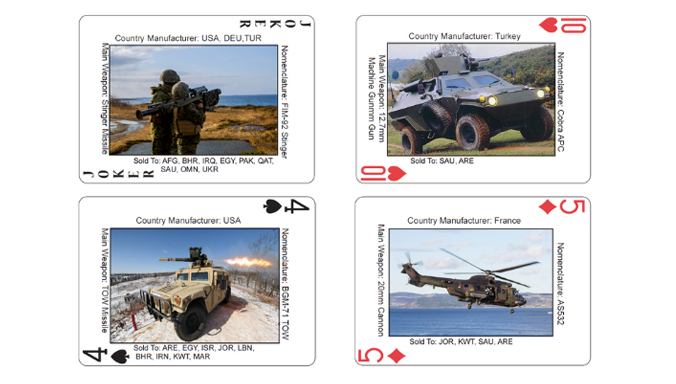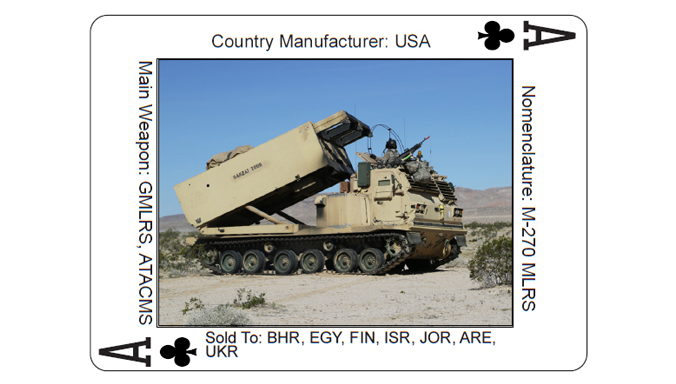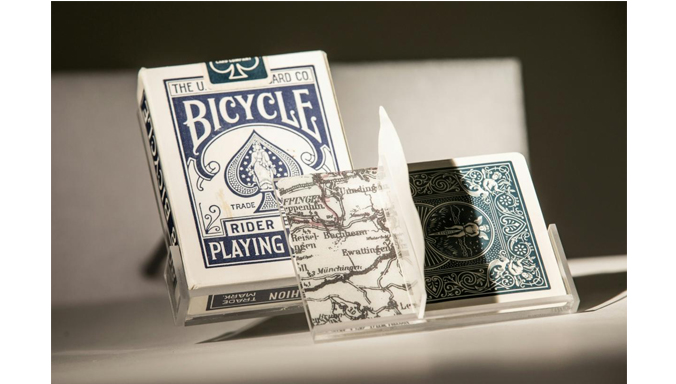Battlefields are high-stress, complex environments where decisions have to be made in a split second. In the fog of conflict, it's not always easy to tell friends from foes - particularly if you're looking at a fast-moving vehicle from a long distance. To address this challenge, the US Army's Training Doctrine Command (TRADOC) has developed a deck of playing cards featuring 54 NATO weapons systems, covering everything from tanks to helicopters to artillery systems.

Card deck prototype of the US Army's Training and Doctrine Command. Photo credit: US Army TRADOC
Helping troops identify NATO equipment
The main purpose of the "NATO Proliferation Playing Cards" is to help troops on the ground become familiar with NATO equipment that has been adopted for use in non-NATO countries, so that they can distinguish this equipment from that of the enemy and prevent friendly fire.
The card deck went into production before Russia's full-scale invasion of Ukraine in February 2022. While this tool was not created specifically with the war against Ukraine in mind, it will be particularly useful to Ukrainian forces, who are currently fighting to free their territory from Russia's illegal occupation.
NATO Allies have sent billions of euros worth of military equipment to Ukraine to help Kyiv defend itself against Russia's war of aggression. Allies have also trained Ukrainian soldiers to use advanced weapons systems, vehicles and other gear. NATO itself has coordinated the donation and delivery of non-lethal assistance to Ukraine, including medical supplies, fuel, combat rations and protective equipment. (Read more about NATO's response to Russia's invasion of Ukraine.)
The cards will help Ukrainian troops identify some of the main pieces of this gear, and also provide them with additional information, including the names of the equipment, its main weapon, the country of manufacture and other countries that have purchased it. The deck contains 52 cards and two jokers. Each card features a piece of gear from a NATO Ally, with suits and numbers randomly assigned. For instance, the seven of spades shows the German-made Gepard anti-aircraft gun, the five of diamonds highlights the French Eurocopter AS532 Cougar and the eight of diamonds features a Slovak-made Dana SPH howitzer. Because the cards went into production prior to Russia's full-scale invasion of Ukraine, the deck may be missing some of the equipment that Allies have provided to assist Ukraine since.

Each of the 54 cards features information on the name of the equipment, its main weapon, the manufacturer and countries that have purchased it. Photo credit: US Army Training and Doctrine Command
The "NATO Proliferation Playing Cards" are available on the Central Army Registry (CAR) website. They can be printed off for use as memory flashcards, or to play any card game, from solitaire to hearts to poker.
Cards on the battlefield - a historical tradition
Card games have been a staple for troops in the field since at least the First World War. During their downtime in the trenches, soldiers would gather to play cards. They provided a much-needed sense of normalcy, promoted social interaction and offered some distraction from negative thoughts. Furthermore, they were simple to learn how to play, even if you didn't speak the same language, and they were easy to carry - a deck of cards would fit in one pocket without having to sacrifice any piece of essential gear.
For the same reason, wartime decks have been used to pass information to troops behind enemy lines. During the Second World War, UK and US intelligence units joined forces to create a deck of cards that would help the Allies escape Nazi imprisonment, particularly from the Colditz Castle prisoner of war camp. Thanks to the Geneva Convention, it was possible for organisations like the Red Cross to deliver care packages to captured soldiers during Christmas.
What was in the cards for the imprisoned troops? Much more than premonitions about the future, the cards featured maps revealing escape routes. Each card had a thin piece of a map concealed between its two thicker outside layers. Using water, the two pieces would separate and reveal their true purpose.

The card deck developed by UK and US intelligence services, which concealed maps with escape routes. Photo credit: International Spy Museum
According to the International Spy Museum in Washington, D.C., which holds some of these historical decks in its collection, these cards prompted more than 310 escape attempts and enabled at least 32 successful escapes from Colditz Castle.
Bringing people together
Playing cards have existed in one form or another for more than a thousand years. No matter how a deck of cards has been designed throughout history, or how many cards it contains, it almost always serves the same ultimate purpose: bringing people together to pass the time in friendly competition. And if they can learn something while they're playing the game, all the better.
A deck of cards might not be the first thing that comes to mind when we think of military instructional tools. But the US Army's NATO equipment deck will complement the more detailed, formal briefings that soldiers receive. And beyond its educational use, it will also provide an even greater value: helping troops get to know each other better, bond as a group, and live and work together more effectively both on and off the battlefield.






